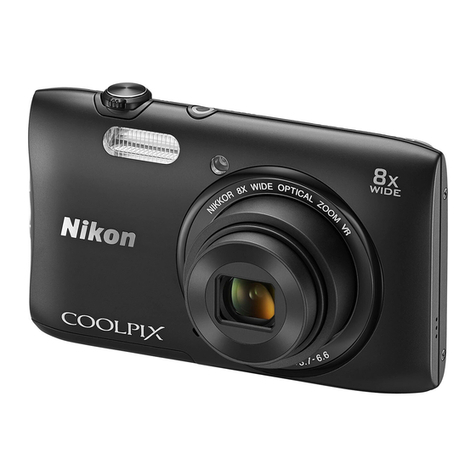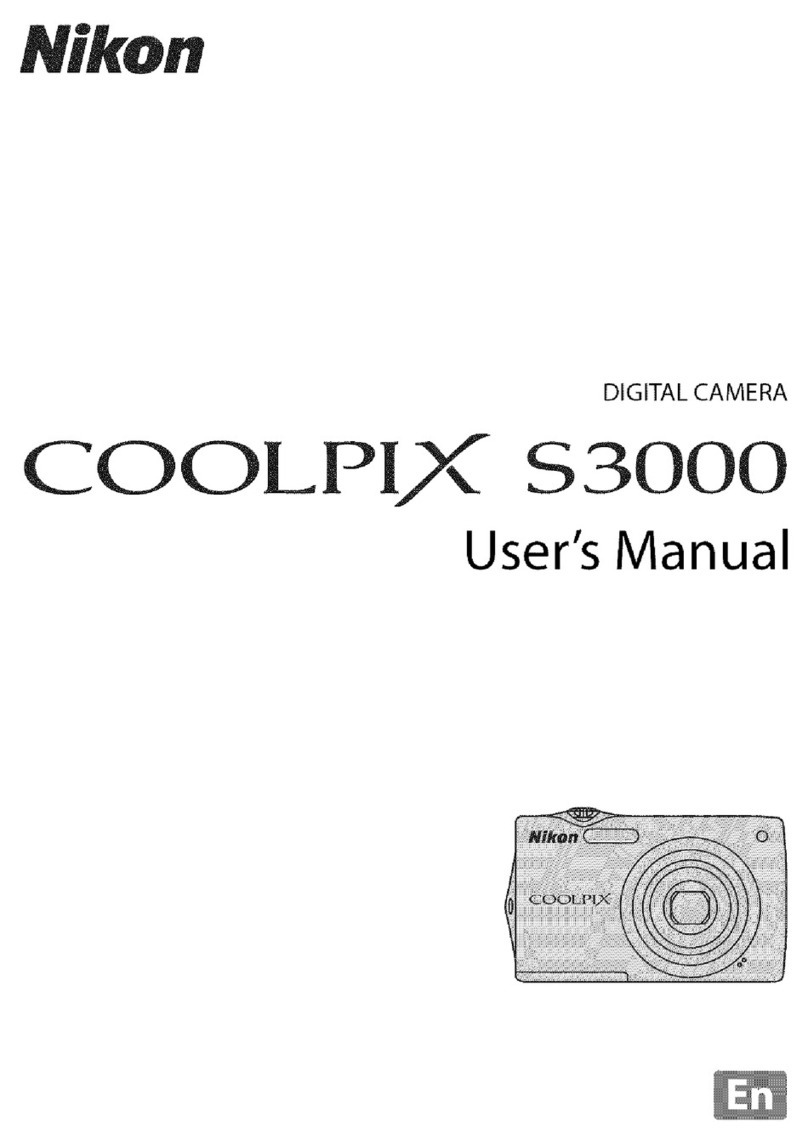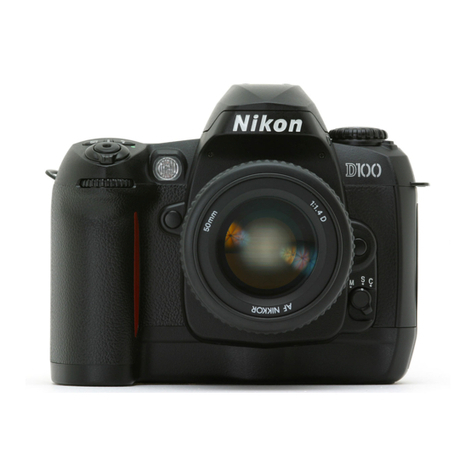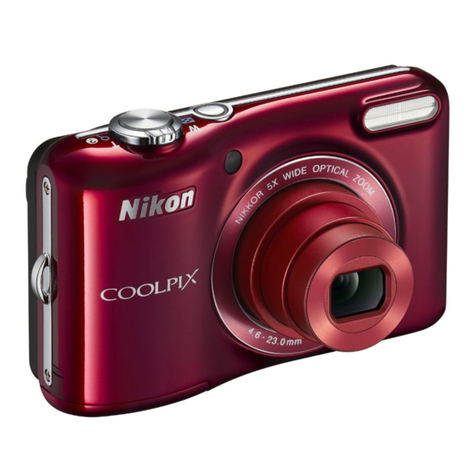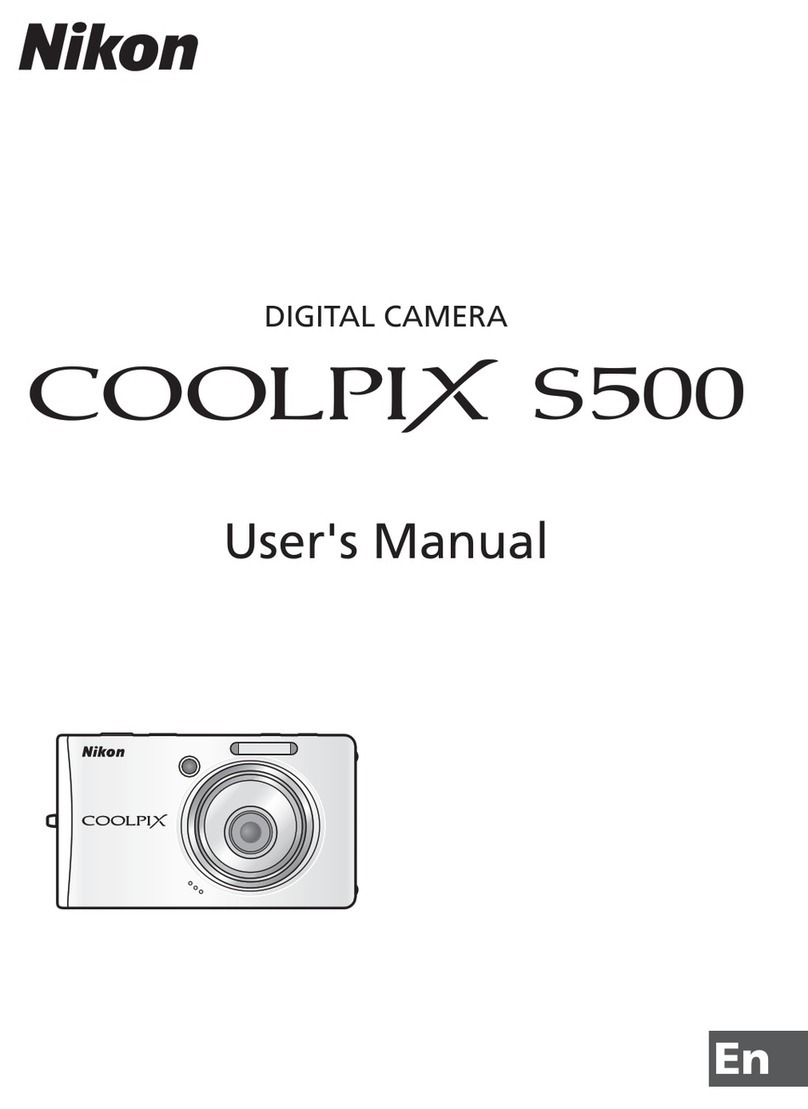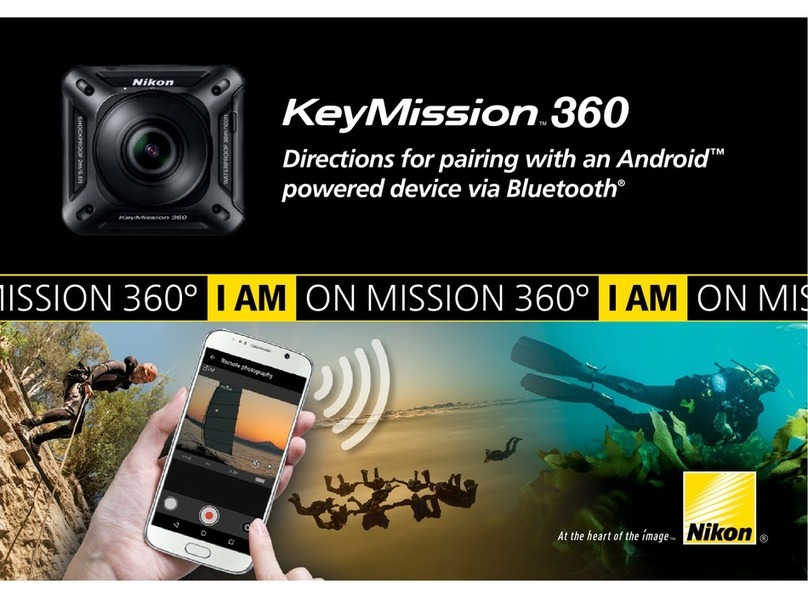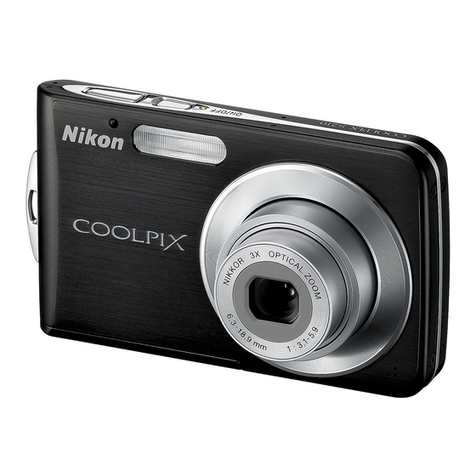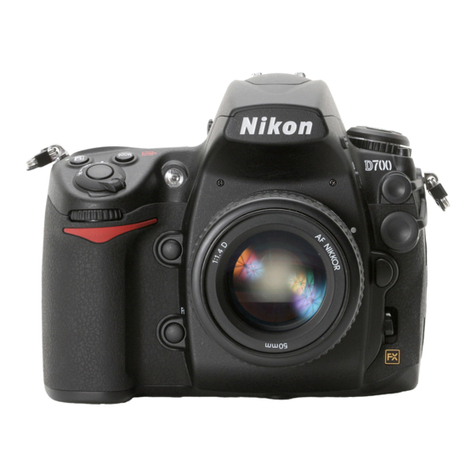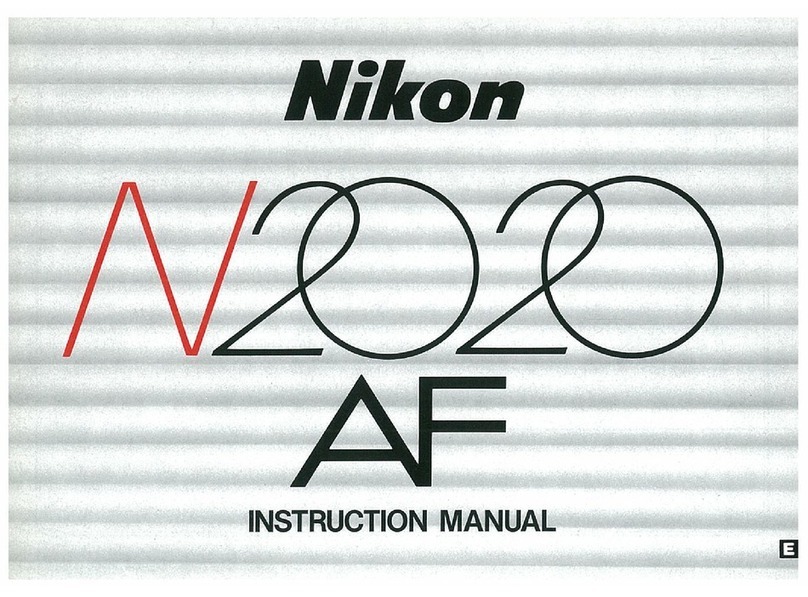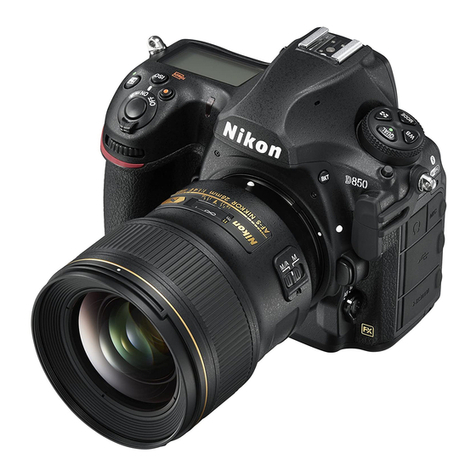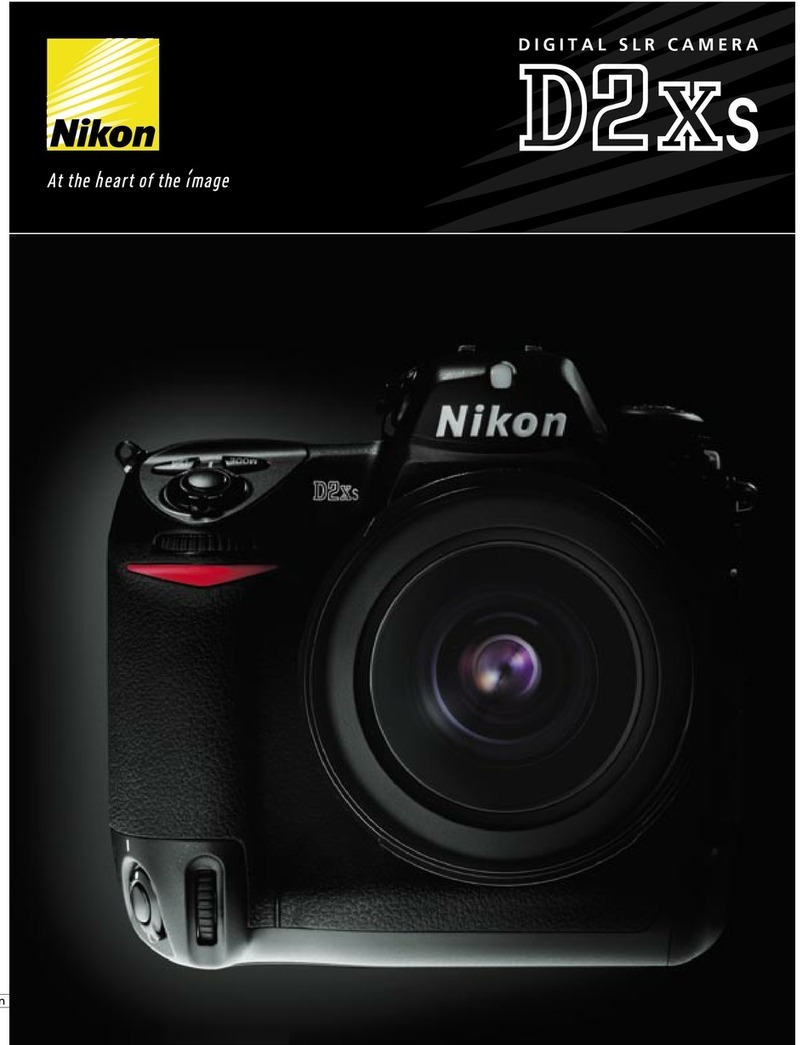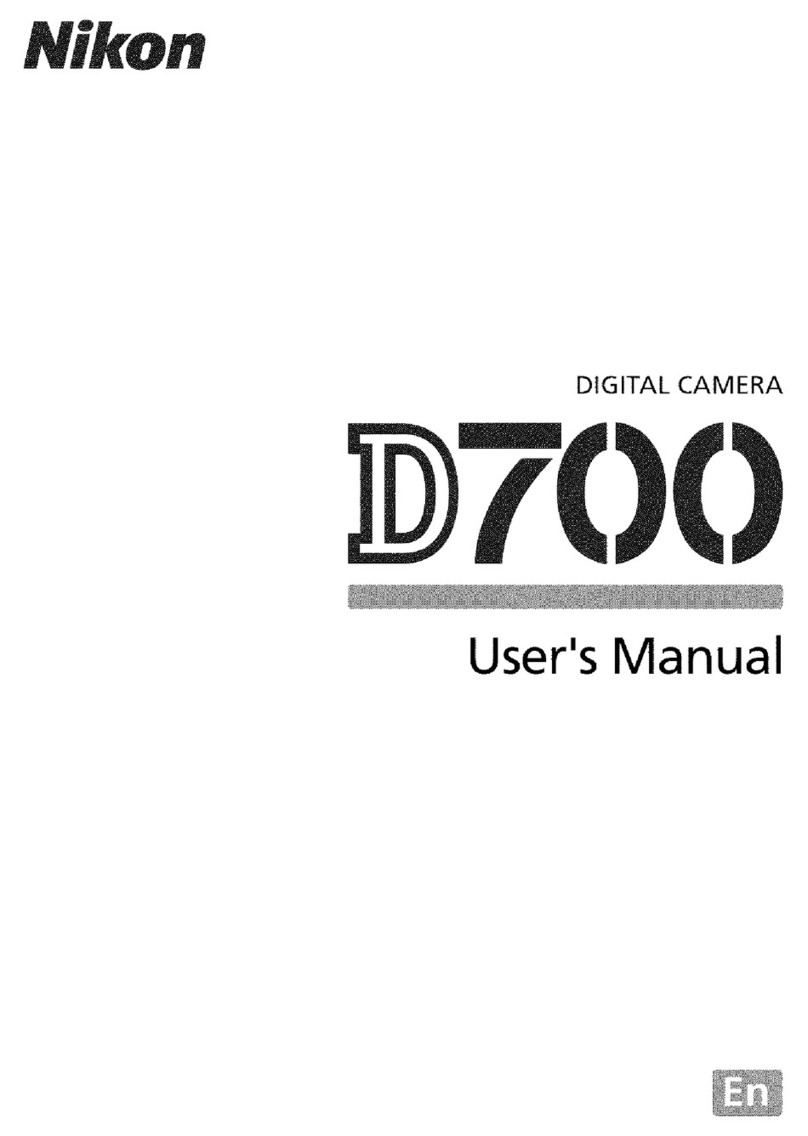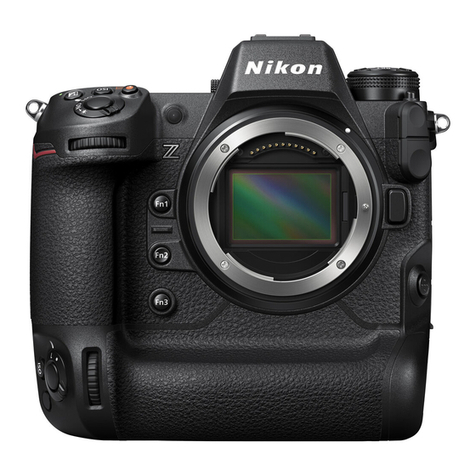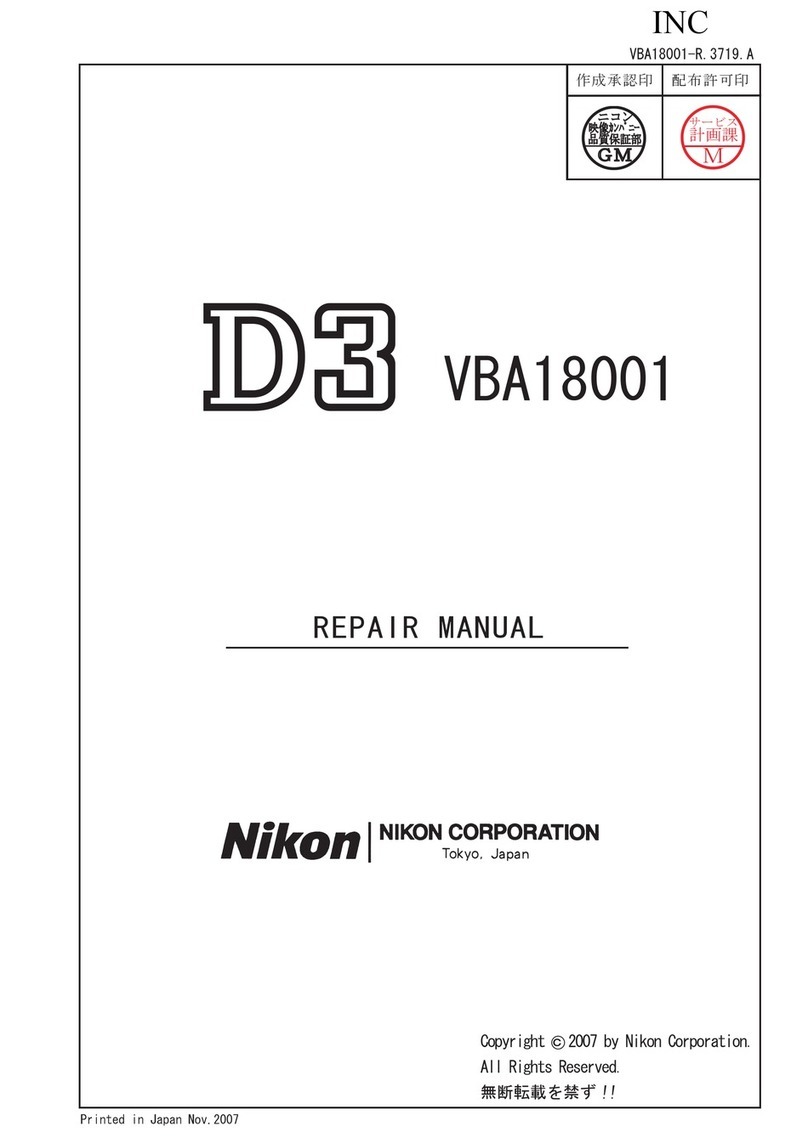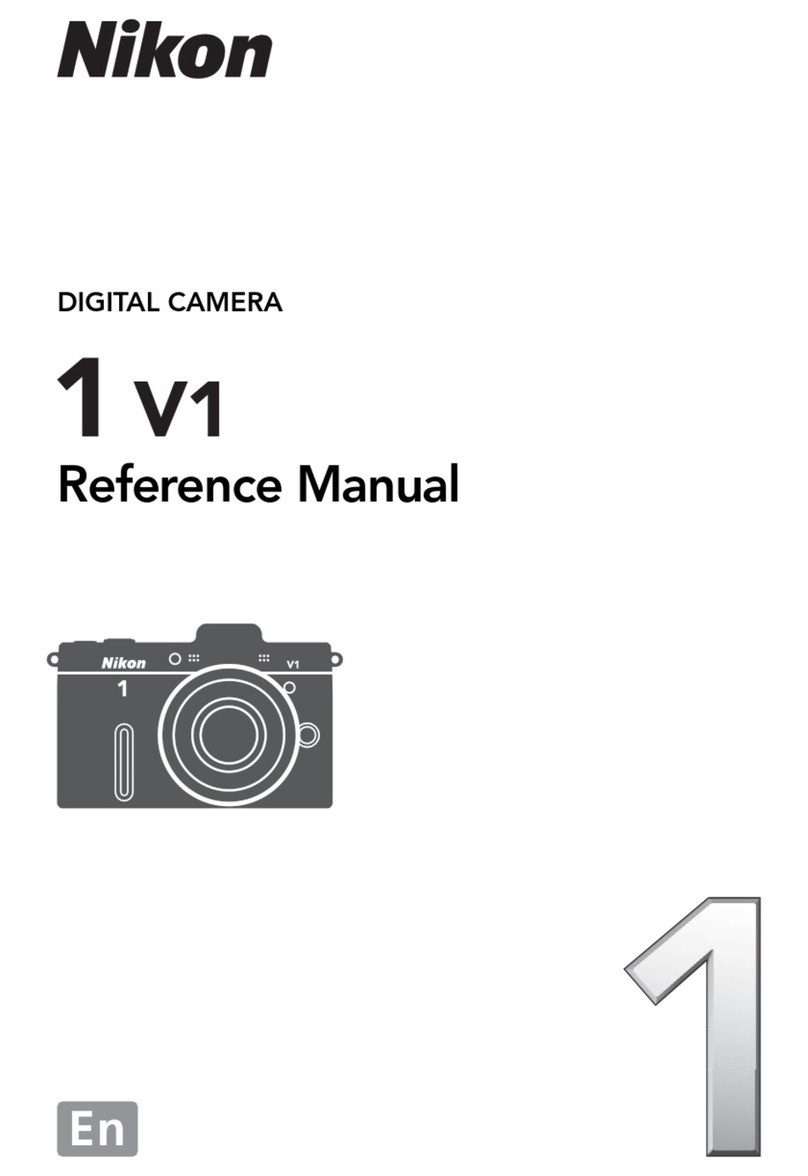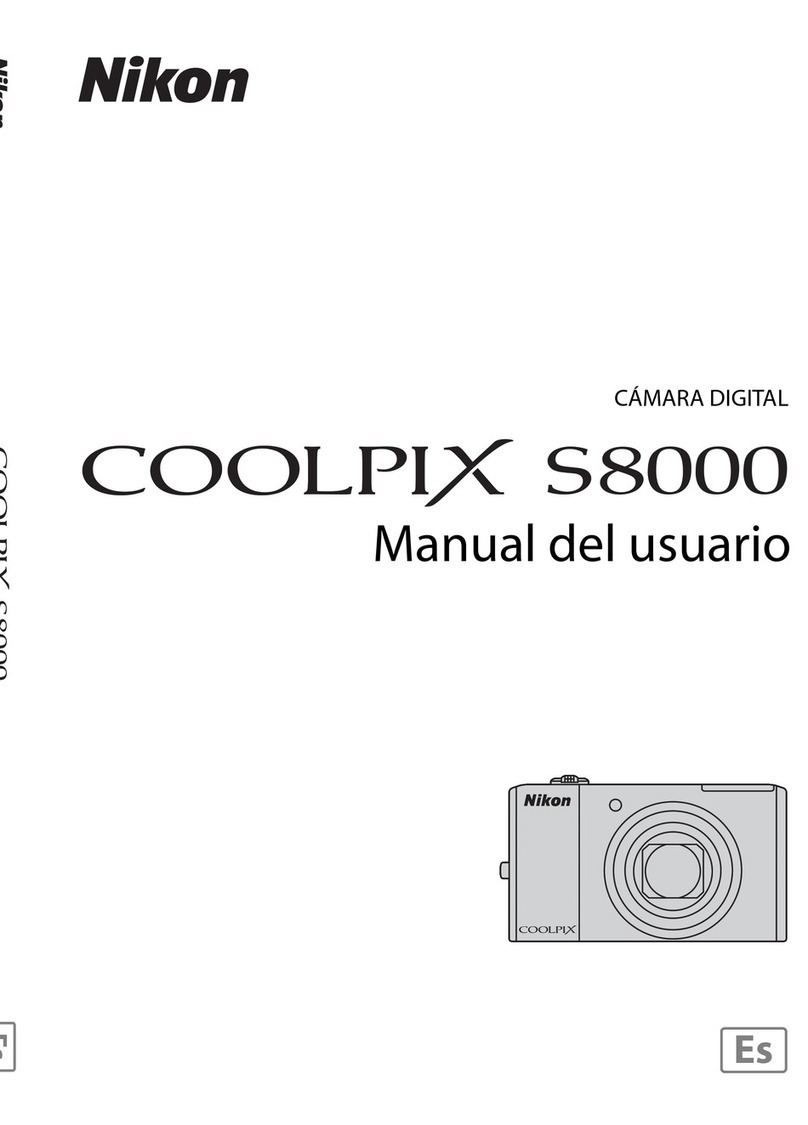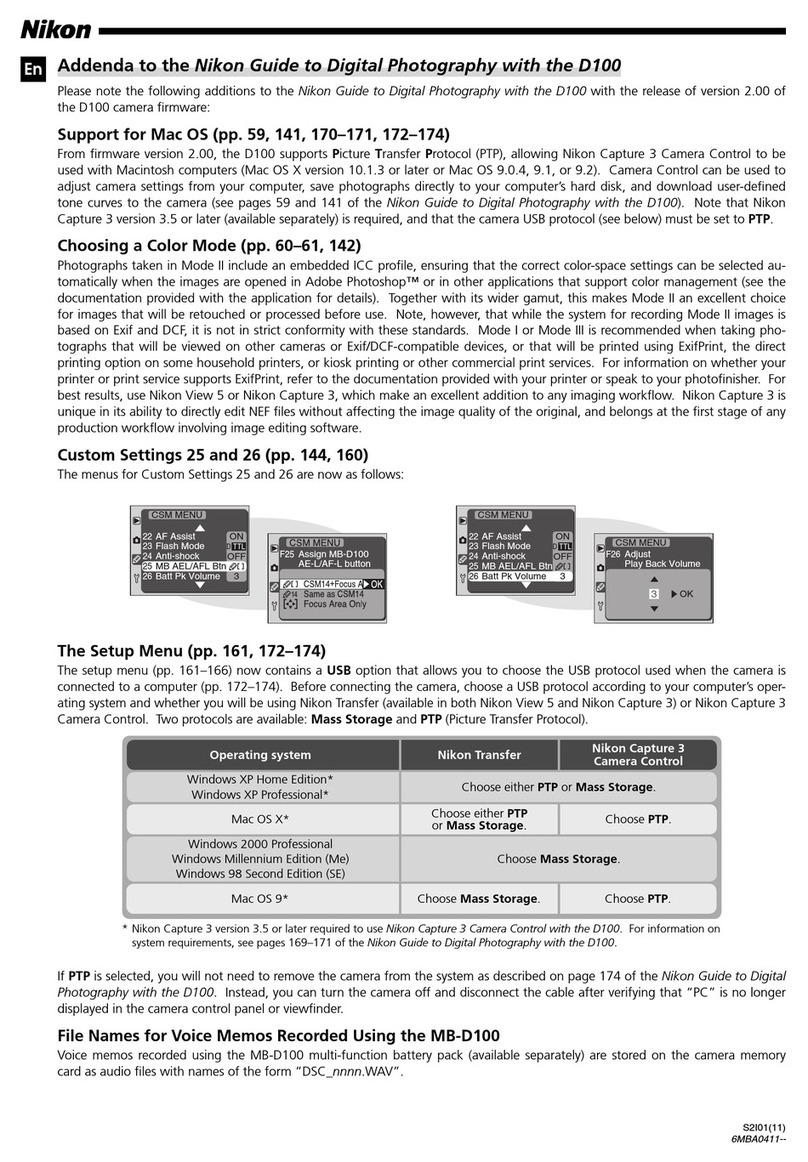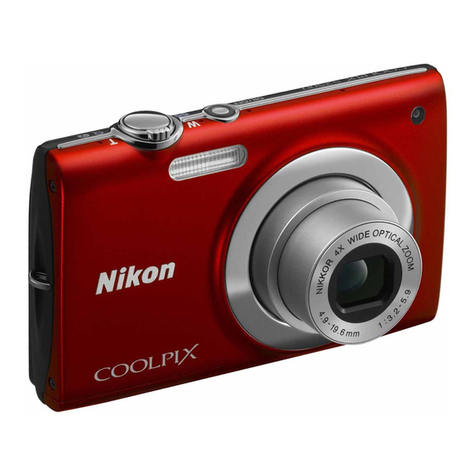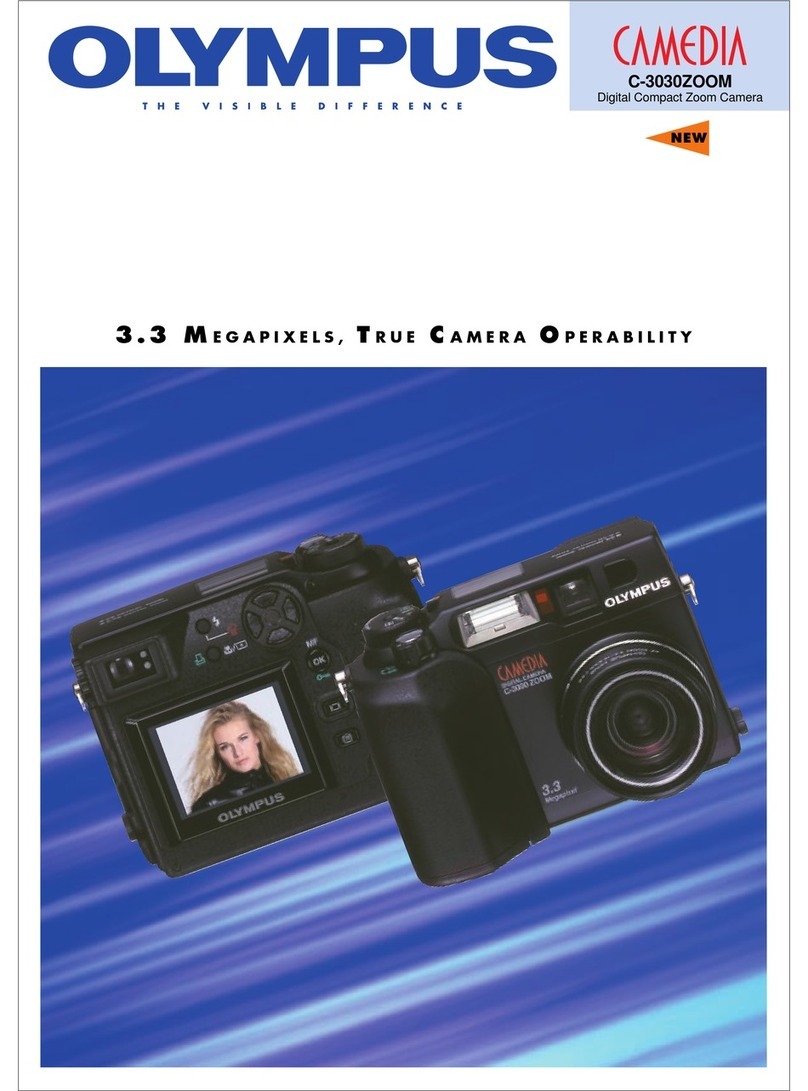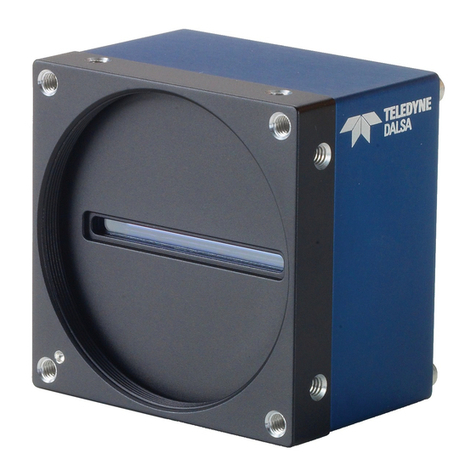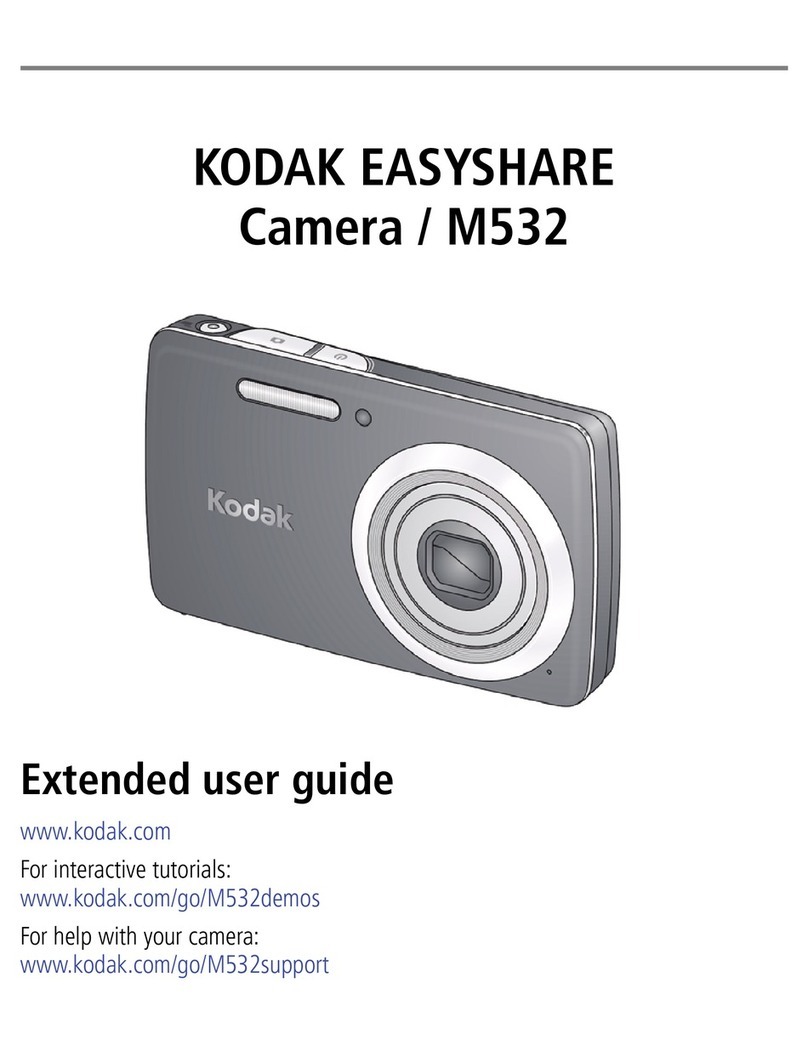Contents
Foreword ...................................................................................2
Accessories ...................................................................................... 3
Your Nikon camera features .............................................................. 4
Camera parts ................................................................................ 6-7
LCD panel indications .......................................................................7
Tips on using the Nuvis S ................................................................ 8
Getting started
Installing the battery ........................................................................ 9
Checking battery power .................................................................... 9
Loading the film ....................................................................... 10-11
IX240 film cartridge ....................................................................... 11
Data recording function .................................................................. 12
Basic operation
Holding the camera properly .......................................................... 13
Shutter release operation ............................................................... 13
Viewfinder indications .................................................................... 14
Selecting a print type ...................................................................... 14
Adjusting diopter ............................................................................15
Zooming ........................................................................................ 15
Focusing and shooting ..............................................................16-17
Difficult-to-focus subjects ...............................................................17
Removing the film .................................................................... 17-18
Take the exposed film cartridge to a photo lab ............................... 18
To rewind the film in mid-roll ........................................................ 19
Advanced operation
How to use focus lock .................................................................... 20
Selecting the flash mode ................................................................ 21
Auto flash photography .................................................................. 21
Flash cancel mode ......................................................................... 22
Anytime flash mode .................................................................. 22-23
Slow sync flash mode .....................................................................23
Red-eye reduction mode ................................................................ 24
Remote control photography (optional) .......................................... 25
Self-timer operation ....................................................................... 26
Close-up shooting ......................................................................... 26
Specifying the number of desired prints ......................................... 27
Title recording function ............................................................ 28-29
Setting the date and time .......................................................... 30-31
Other information
Troubleshooting ....................................................................... 32-33
Specifications ........................................................................... 34-35
For safe handling of the camera (WARNING/CAUTION) ........... 36-37
5
